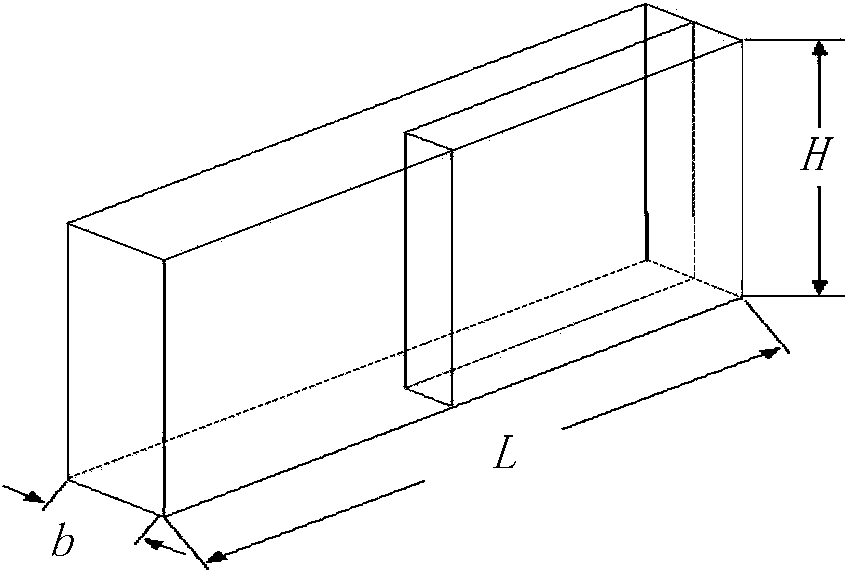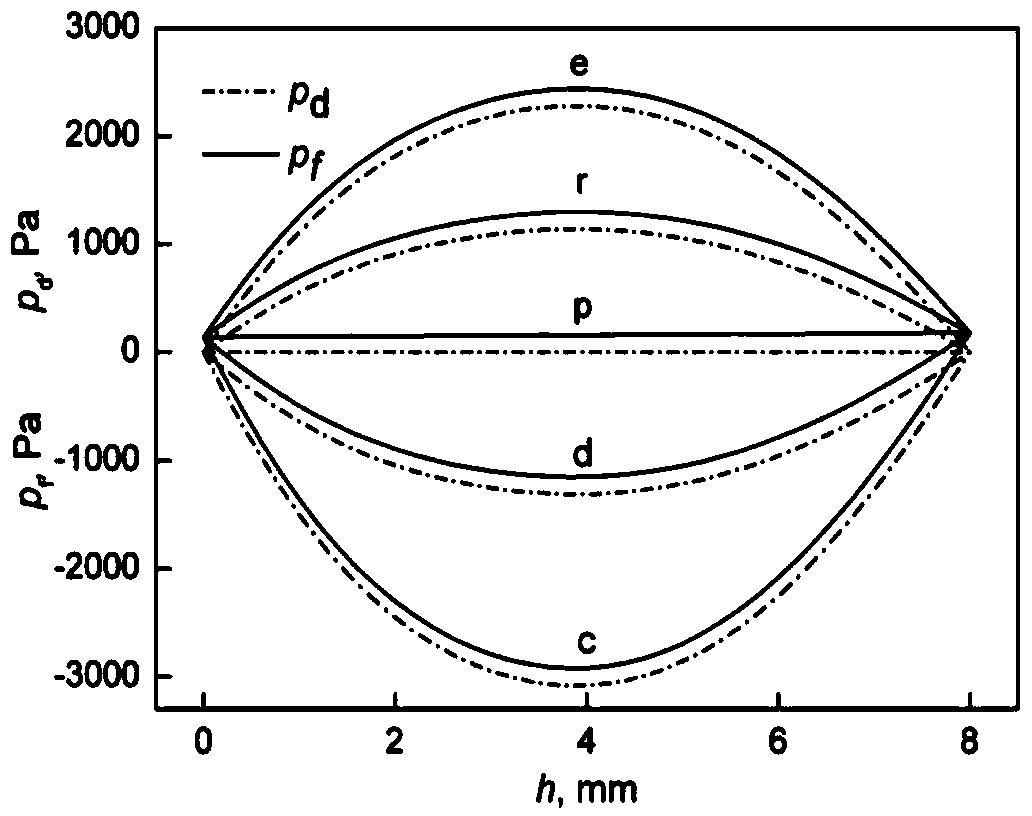Method for predicting initial crack of continuous casting slab upon force analysis
An initial crack and force analysis technology, applied in special data processing applications, instruments, electrical digital data processing, etc., can solve problems that cannot truly reflect the mechanical state of the billet shell
- Summary
- Abstract
- Description
- Claims
- Application Information
AI Technical Summary
Problems solved by technology
Method used
Image
Examples
Embodiment 1
[0064] Based on the SSCT test data of low-carbon steel ([C]=0.04%), the relationship between the critical fracture strength of the billet shell in the high temperature zone and the composition of the steel grade is fitted:
[0065] σ max =284.0686*[%C]+0.4863*[%Si]-1.8638*[%Mn]-63.0185*[%P]+115.7562*[%S]+2.9203*[%Al]-0.00805*T int
[0066] In the formula, T int is the initial setting shell temperature, °C;
[0067] Take the steel type ([C]0.04%, [Si]0.1%, [Mn]0.11%, [P]0.013%, [S]0.013%, [Al]0.12%), and calculate the liquidus temperature according to the composition of the steel type (1530.6°C) and solidus temperature (1502.1°C), setting the solid phase fraction of the meniscus solidification front to 0.9, the initial solidification shell temperature of the meniscus is determined to be 1506°C.
[0068] Figure 6 It is the relationship between the critical fracture strength of the low-carbon steel ([C]=0.04%) in the high temperature zone and the temperature. It can be see...
Embodiment 2
[0070] Based on the SSCT test data of medium carbon steel ([C]=0.358%), the relationship between the critical fracture strength of the billet shell in the high temperature zone and the composition of the steel grade is fitted:
[0071] σ max =81.149*[%C]-59.5764*[%Si]+135.887*[%Mn]-737.405*[%S]-1.0844*[%Al]-0.01922*T int
[0072] In the formula, T int is the initial setting shell temperature, °C;
[0073] Take steel grades ([C]0.358%, [Si]0.15%, [Mn]0.14%, [S]0.015%, [Al]0.015%), calculate liquidus temperature (1505℃) and solid The phase line temperature (1414.5°C) and the solid phase fraction of the meniscus solidification front are set to 0.9, then the initial solidification shell temperature of the meniscus is determined to be 1427°C.
[0074] Figure 7 It is the variation relationship of the critical fracture strength of the medium carbon steel ([C]=0.358%) in the high temperature zone with temperature. It can be seen from the figure that the maximum bending stress o...
Embodiment 3
[0076] Based on the SSCT test data of high-carbon steel ([C]=0.701%), the relationship between the critical fracture strength of the billet shell in the high temperature zone and the composition of the steel grade is fitted:
[0077] σ max =-25.613*[%C]-101.345*[%Si]+129.6665*[%Mn]+3246.755*[%P]+176.4084*[%S]+12.502*[%Al]-0.0114*T int
[0078] In the formula, T int is the shell surface temperature, °C;
[0079] Take the steel type ([C]0.701%, [Si]0.52%, [Mn]0.32%, [P]0.011%, [S]0.012%, [Al]0.56%) to calculate its liquidus temperature according to the composition of the steel type (1475°C) and solidus temperature (1319°C), setting the solid phase fraction of the meniscus solidification front to 0.9, it can be determined that the initial solidification shell temperature of the meniscus is 1342°C.
[0080] Figure 8 It is the relationship between the critical fracture strength of the high-carbon steel ([C]=0.701%) in the high temperature zone and the temperature. It can be ...
PUM
 Login to view more
Login to view more Abstract
Description
Claims
Application Information
 Login to view more
Login to view more - R&D Engineer
- R&D Manager
- IP Professional
- Industry Leading Data Capabilities
- Powerful AI technology
- Patent DNA Extraction
Browse by: Latest US Patents, China's latest patents, Technical Efficacy Thesaurus, Application Domain, Technology Topic.
© 2024 PatSnap. All rights reserved.Legal|Privacy policy|Modern Slavery Act Transparency Statement|Sitemap



